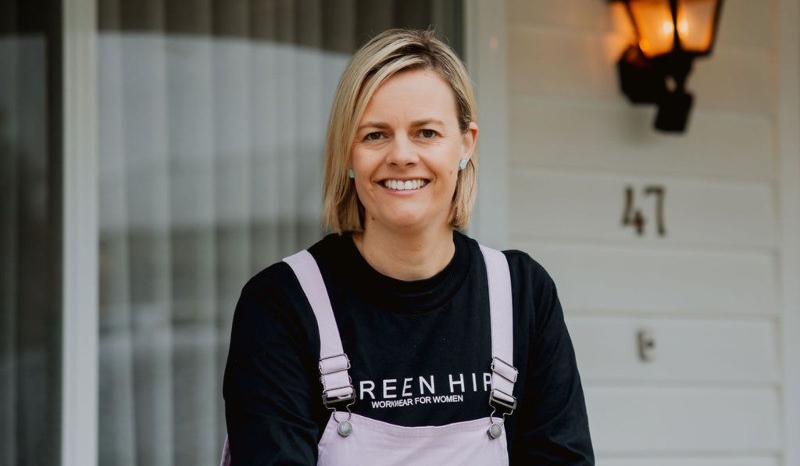Will Jim Chalmers' budget drive up inflation? Not likely – and here's why
- Written by Peter Martin, Visiting Fellow, Crawford School of Public Policy, Australian National University

The proposition that cutting prices will stoke inflation is a hard one to get your head around, even if you are an economist.
Yet it has been seriously put forward as a critique of this month’s budget; the one in which Treasurer Jim Chalmers announced measures that will take the edge off electricity and gas[1] prices, the price of prescriptions[2] and some visits to the doctor[3], and the out-of-pocket costs faced by low-income renters[4].
And childcare[5]. Although announced in last year’s budget, measures to take effect in July are set to save a typical family with one child in care about $1,780 per year.
Some of the critics of these measures were participants in this year’s Economic Society of Australia post-budget survey[6].
What they said was that cutting these prices will give people more free money to spend on other things, pushing up prices elsewhere, and putting more pressure on inflation and the Reserve Bank, which might have to push interest rates higher.
As one of them put it, subsidising bills is “not really all that different” to giving people cash payments that they can use to bid up prices and push up inflation.
As I said, it’s a hard argument to get your head around. It makes sense in theory, but in practice I don’t think it makes much sense at the moment, given the measures actually in the budget.
Correct in theory, if not in practice
Here’s how it might make sense. Imagine a big expense that households had no choice but to pay. If the government introduced measures that increased it by $1,000 a month, those households would be forced to spend a good deal less per month on other things, and would put a good deal less upward pressure on prices.
Actually, we don’t need to imagine. It’s partly why the Reserve Bank has just ramped up interest rates – to increase mortgage payments by up to $1,000 per month[7], and in doing so take up to $1,000 a month from household budgets to take pressure off prices.
And it’s partly why the Reserve Bank cuts interest rates – to lower mortgage payments and free up money households can use to bid up prices.
The argument is that if a cut in the price of paying off a mortgage can be inflationary, so too can cuts in other prices.
Except that other price cuts are hardly ever anything like as big.
When the price of petrol (and diesel) jumped 40 cents[8] per litre after Russia invaded Ukraine in 2022, few people doubted it was inflationary. It pushed up the price of nearly everything.
So when the price per litre fell 22.1 cents[9] after the Morrison government temporarily cut fuel excise, few doubted that the measure restrained inflation as it was meant to, even though if the price had been cut by much more the cut might well have fed inflation.
Which is another way of saying that size matters. If I was to spit into the ocean, theory suggests I would lift the sea level. Practice suggests I would not.
A small effect, with a lag
In his post-budget address to Australian Business Economists[10] last week, Treasury Secretary Steven Kennedy revealed the government’s calculations on the budget’s effects on inflation.
He said the changes to rent assistance, the price of prescriptions and bulk billing were small and would put only “small downward pressure on prices”, which he conceded might theoretically be offset by a boost to spending.
But he said that offsetting effect would be “largely immaterial”, meaning it would be too small to measure.
Read more: No, the budget does not make further interest rate rises more likely[11]
The energy price measures will do much more. Kennedy’s department reckons they will cut inflation by three quarters of a percentage point in 2023-24, producing an inflation rate of 3.25% rather than 4% in the year to June 2024.
It says the caps on wholesale prices will do most of the work, cutting the inflation rate by half a per cent, with the consumer and business rebates cutting inflation by a further quarter of a per cent. When the rebates end in mid-2025 their effect will be unwound.
The department says the offsetting effect from extra spending will be measurable but “small”, and will work “with a lag”. So by the time it has had much of an effect, inflation itself should be a good deal lower.
And Kennedy identified three things that should help offset the offsetting effect:
lower energy prices and inflation will lower the indexation of payments that are linked to inflation, putting less money into the economy to add to inflation
the expected 0.75 point cut in inflation should help restrain inflationary expectations, making it harder for high inflation to become self-sustaining
the cuts in the profits of energy companies brought about by the energy price caps will themselves remove money from the economy.
And Kennedy says Australia is well placed to fight inflation in other ways.
All of the budget measures taken together, including the cost-of-living measures, should add just $20 billion to the amount the government pumps into the economy over the next four years – a mere fraction of $11 trillion that Australians will spend and earn over that time.
As well, Australia’s very, very low unemployment rate has pushed the proportion of the population in paid employment to record highs, making Australia better able than ever to call upon workers to respond to shortages as prices rise.
Read more: Economists award Chalmers top marks for budget, but less for fighting inflation[12]
The faster-than-expected return of migration will help even more, adding to the capacity of the economy to provide services without pushing up prices, all the more so because the migrants Australia selects tend to be young enough not to need many services themselves.
While you can never know what’s around the corner, I’m yet to see a credible argument that inflation won’t do as predicted in the budget: come down swiftly from here on. It’s forecast to fall from 7% to 6% by the middle of this year, and to 3.25% by the middle of next year.
Rather than making inflation worse, it seems to me that by cutting prices for many of us, the budget will help bring down inflation sooner.
References
- ^ electricity and gas (cdn.theconversation.com)
- ^ prescriptions (cdn.theconversation.com)
- ^ doctor (cdn.theconversation.com)
- ^ low-income renters (cdn.theconversation.com)
- ^ childcare (cdn.theconversation.com)
- ^ post-budget survey (theconversation.com)
- ^ $1,000 per month (theconversation.com)
- ^ jumped 40 cents (www.accc.gov.au)
- ^ fell 22.1 cents (ministers.treasury.gov.au)
- ^ Australian Business Economists (treasury.gov.au)
- ^ No, the budget does not make further interest rate rises more likely (theconversation.com)
- ^ Economists award Chalmers top marks for budget, but less for fighting inflation (theconversation.com)
Authors: Peter Martin, Visiting Fellow, Crawford School of Public Policy, Australian National University














